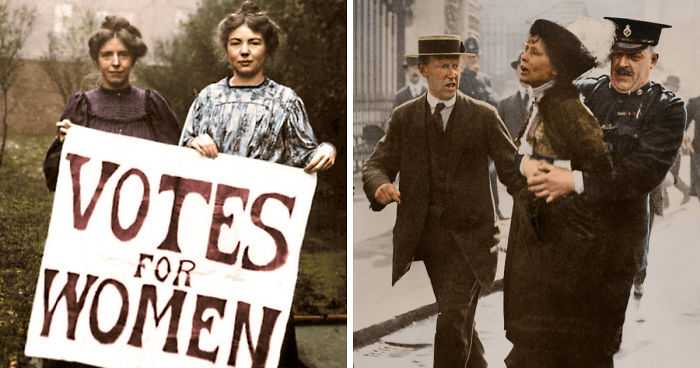
I’ve Colorized These 100-Year-Old Photos To Show How Much Of A Struggle It Was To Have The Women’s Rights That We Have Today
“We are here, not because we are lawbreakers; We are here in our efforts to become lawmakers” Emmeline Pankhurst (1858-1928).
Tuesday 6th February 2018 marks the centenary of the Representation of the People Act 1918 in Britain, which granted voting rights to women over the age of 30.
As a photo colouriser and lover of history, I wanted to mark this anniversary by bringing some life into the photos of the women who helped to break down social divisions.
I have always been a feminist, and it still baffles me that in 2018 we still don’t have full equality between men and women. We have however come a long way in the past 100 years, and I’ve colourised these photos from the early 20th century to show how much of a struggle it was for the women than to get where they are today.
Later this year a statue will be unveiled of Millicent Fawcett, the President of the National Union of Women’s Suffrage Societies, in London’s Parliament Square. A ‘suffragist’ rather than a ‘suffragette’, Fawcett believed in peaceful protest, wrote thousands of letters and campaigned tirelessly for the rights of women throughout her life.
The suffragist campaigners began by holding public meetings, seeking newspaper coverage and publishing pamphlets and magazines to spread their message. By the 1900s they had gathered thousands of members throughout Britain.
Colourised images © Tom Marshall (PhotograFix) 2018
More info: Facebook | photogra-fix.com
Millicent Fawcett (1847-1929) – a peaceful campaigner
Fawcett concentrated much of her energy on the struggle to improve women’s opportunities for higher education and in 1875 co-founded Newnham College, Cambridge, one of the first Cambridge colleges to admit women.
As president of the NUWSS, she aimed to achieve women’s suffrage through peaceful and legal means, in particular by introducing Parliamentary Bills and holding meetings to explain and promote the society’s aims.
However there were members of the society who believed in a more militant approach to campaigning. In 1903, Emmeline Pankhurst split from the NUWSS and founded the Women’s Social and Political Union (WSPU), later more commonly known as the suffragettes. Their motto was ‘deeds, not words’.
Emmeline Pankhurst is arrested by Superintendant Rolfe outside Buckingham Palace, while trying to present a petition to HM King George V in May 1914
The suffragettes are arguably better remembered today than the suffragists, because essentially this was their aim, to make the newspaper headlines, and to garner as much public attention and support for their cause as possible
100 years ago men believed themselves to be the superior sex (some might still consider this to be the case) and there was a fear that if women got the vote, they’d stop getting married, having children, and that the British race would die out.
From the mid 19th century, women started to fight their corner. Pioneers such as Millicent Fawcett had started the conversation, it was up to the suffragettes to get the politicians to take notice.
Emmeline Pankhurst c1913
The suffragettes campaigned in a much more militant fashion, smashing windows, chaining themselves to the railings outside parliament, arson and damage to property.
The levels of protest varied; some suffragettes used toffee hammers to smash windows, some burned down churches and letter bombed pillar boxes. Their deeds didn’t always help their campaign, but they did give much needed publicity to the cause, and kept the issue of women’s equality in the newspaper headlines.
Emmeline and her daughters Christabel and Sylvia, at Waterloo station, 4th October 1911
Emmeline was setting off for a lecture tour of the US and Canada.
WSPU founders Annie Kenney and Christabel Pankhurst
Over 1000 women were arrested over the course of their campaign. Never before had so many women been imprisoned for a political cause. The women demanded to be given the status of political prisoners, and when the government refused, they went on hunger strike.
The government’s response was to force feed the prisoners, with a funnel and tube pushed down into their stomachs.
A woman peers through a smashed window at Holloway prison, following a nearby explosion at a suffragette safe house backing onto the prison
Suffragette Mabel Capper was arrested in Bow Street in 1912. She wears the colours of the WSPU, with a purple, white and green medal ribbon
Emmeline Pethick-Lawrence, editor of the weekly newspaper, Votes for Women, wrote, ‘Purple as everyone knows is the royal colour, it stands for the royal blood that flows in the veins of every suffragette, the instinct of freedom and dignity. White stands for purity in private and public life.. Green is the colour of hope and the emblem of spring.’
The First World War was a turning point in the history of women’s suffrage. The WSPU called an immediate halt to their suffrage activism in support of the British government’s war effort. Emmeline Pankhurst believed that the danger posed during the First World War by what she called the “German Peril” outweighed the need for women’s suffrage. “When the time comes we shall renew that fight,” she said, “but for the present we must all do our best to fight a common foe.”
Unlike the Pankhursts, Milicent Fawcett’s NUWSS did not cease their activities at the outbreak of war. Less militant, and containing many more pacifists, support for the war was weaker. While Fawcett was not a pacifist, she risked dividing the organisation if she ordered a halt to the campaign.
The NUWSS continued to campaign for the vote during the war, and used the situation to their advantage by pointing out the contribution women had made to the war effort in their campaigns. During the war more than a million women worked in the munitions factories alone. Women’s employment rates rose from 23.6% of the working age population in 1914 to between 37.7% and 46.7% in 1918.
Women across Britain filled roles formerly reserved for men, for example as railway guards and ticket collectors, buses and tram conductors, postal workers, police officers and firefighters.
A female munitions worker in a British factory during World War One
Slowly, public resistance to giving women the vote began to diminish and on 6th February 1918 the Representation of the People Act 1918 was passed giving the vote to Women over the age of 30. These women only received the vote if they were either a member of, or married to a member of, the Local Government Register, a property owner, or a graduate voting in a University constituency so it was only 40% of women who were able to vote in 1918, but it was a start. 10 years later, the age limit was lowered and the law finally ensured that when it came to voting, women had the same rights as men.
Historians will always debate the reasons behind women getting the vote. The suffragists and the suffragettes each had their methods of protest and some were more effective than others. The suffragettes will undoubtedly be remembered for their deeds, but equally the suffragists tireless campaigning played a major role in the political shift.
It’s 2018, and the gap between men’s and women’s rights has narrowed, but full equal rights still don’t yet exist. Hopefully it won’t take another 100 years.
Colourised images © Tom Marshall (PhotograFix) 2018
18Kviews
Share on Facebook"Tuesday 6th February 2018 marks the centenary of the Representation of the People Act 1918 in Britain, which granted voting rights to women over the age of 30." Over the age of 30, because otherwise they would not get it at all. Such was the compromise, it's appalling. Thank you daring ladies, you had to endure so much abuse so we can keep advancing today.
Indeed! In Switzerland was in 1971... shocking facts.
Load More Replies..."Tuesday 6th February 2018 marks the centenary of the Representation of the People Act 1918 in Britain, which granted voting rights to women over the age of 30." Over the age of 30, because otherwise they would not get it at all. Such was the compromise, it's appalling. Thank you daring ladies, you had to endure so much abuse so we can keep advancing today.
Indeed! In Switzerland was in 1971... shocking facts.
Load More Replies...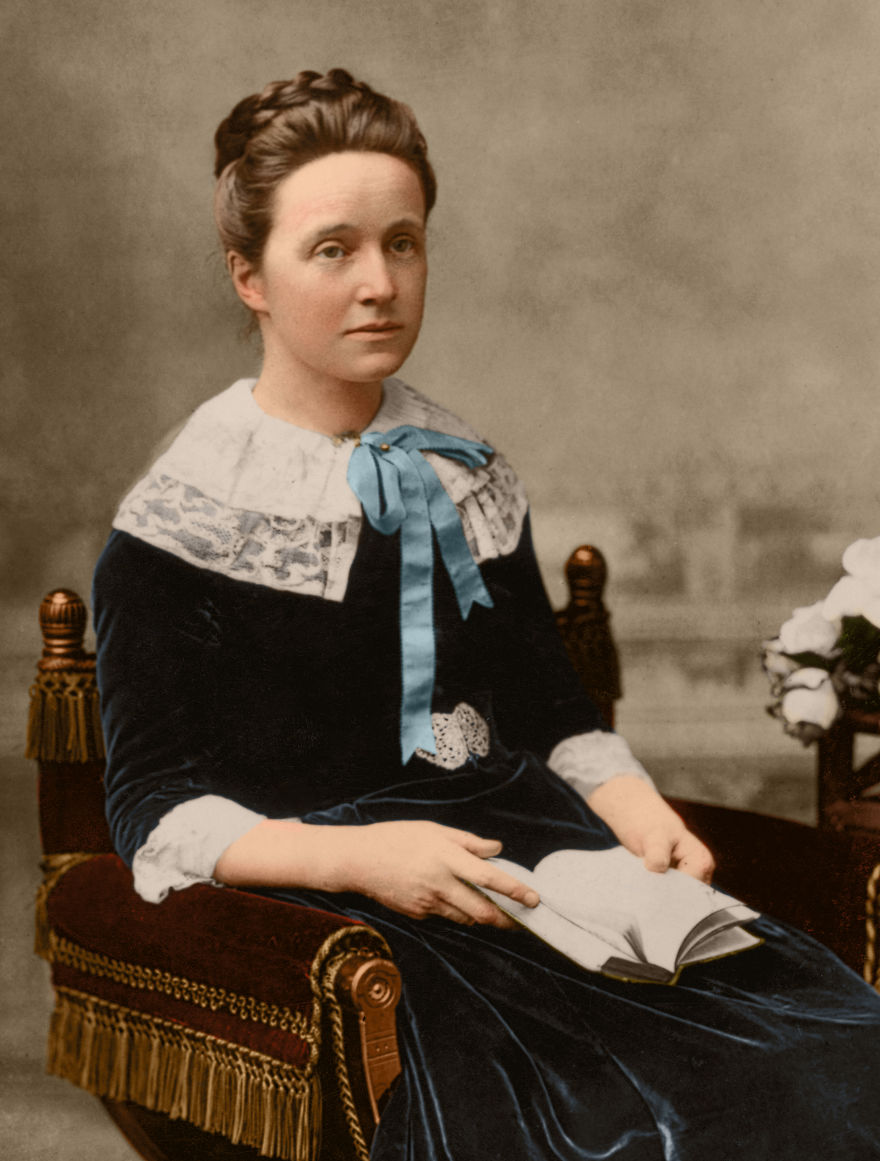
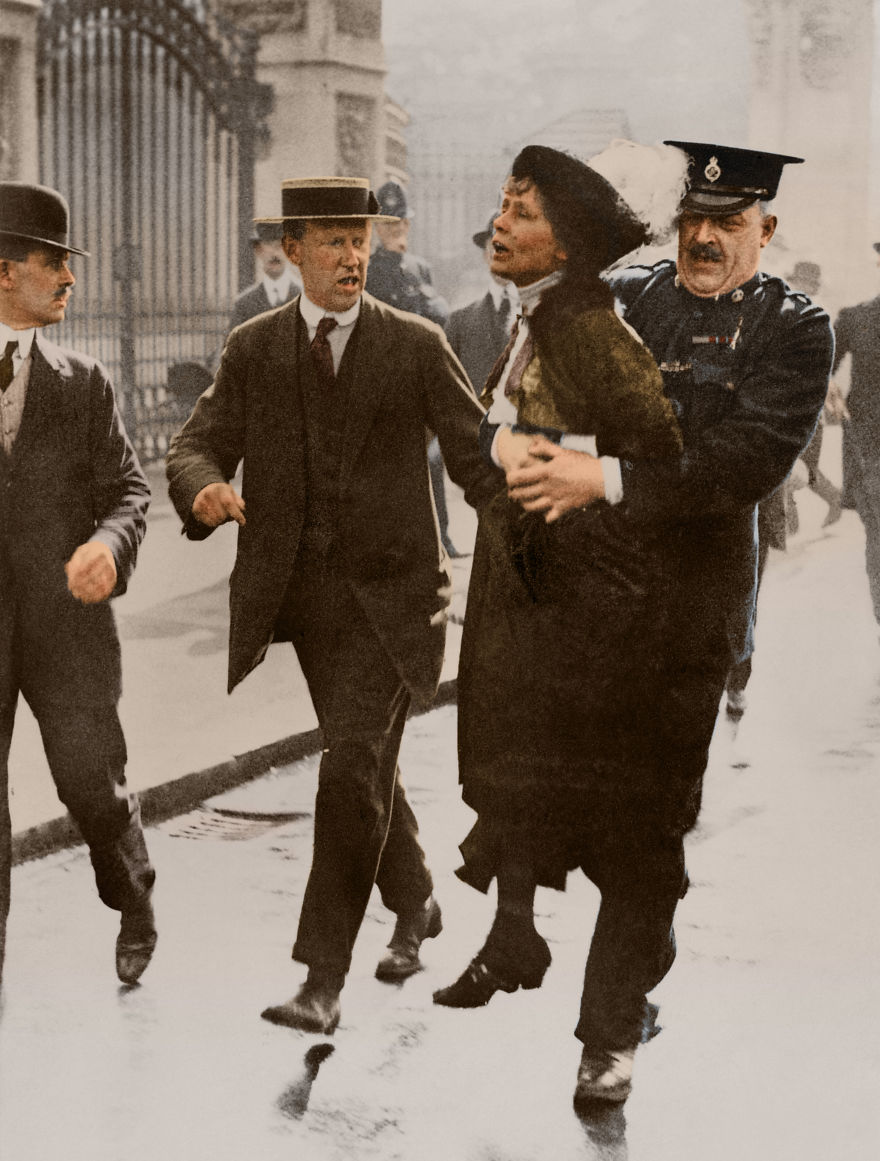
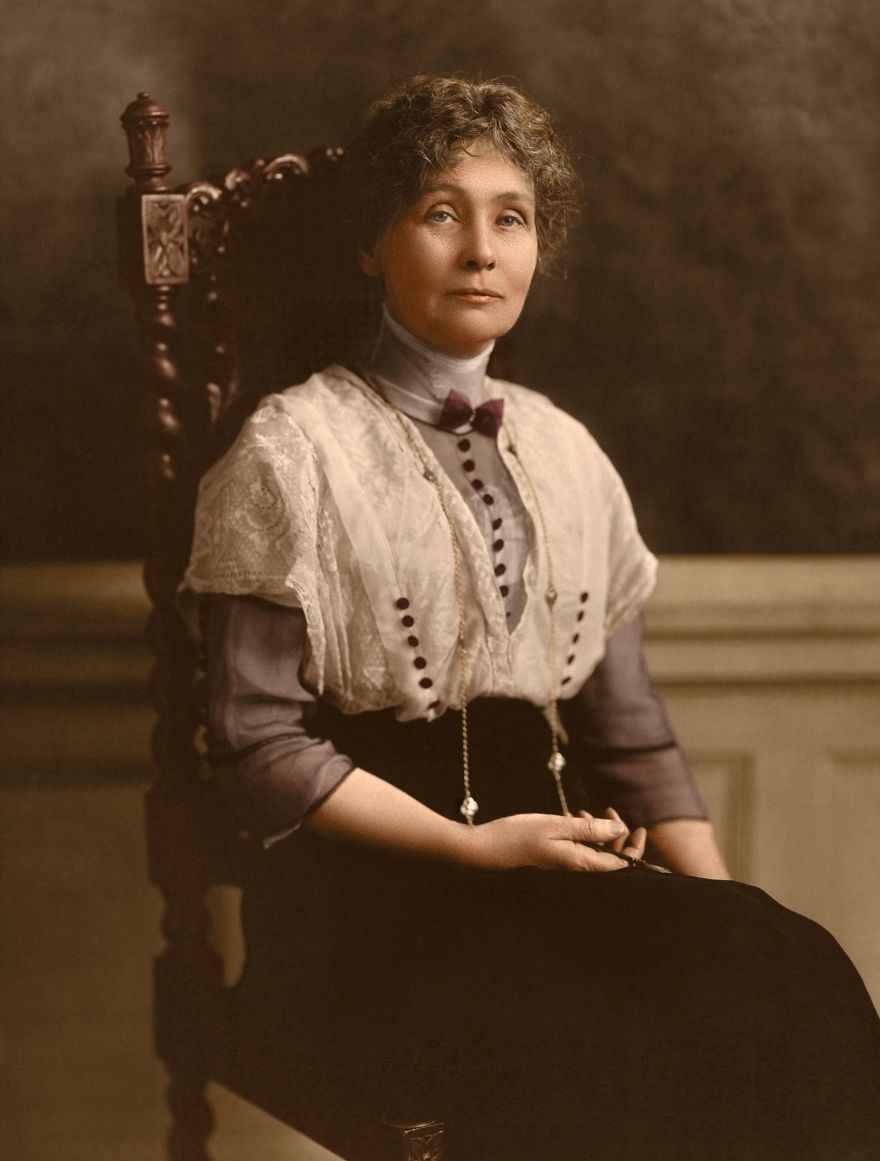

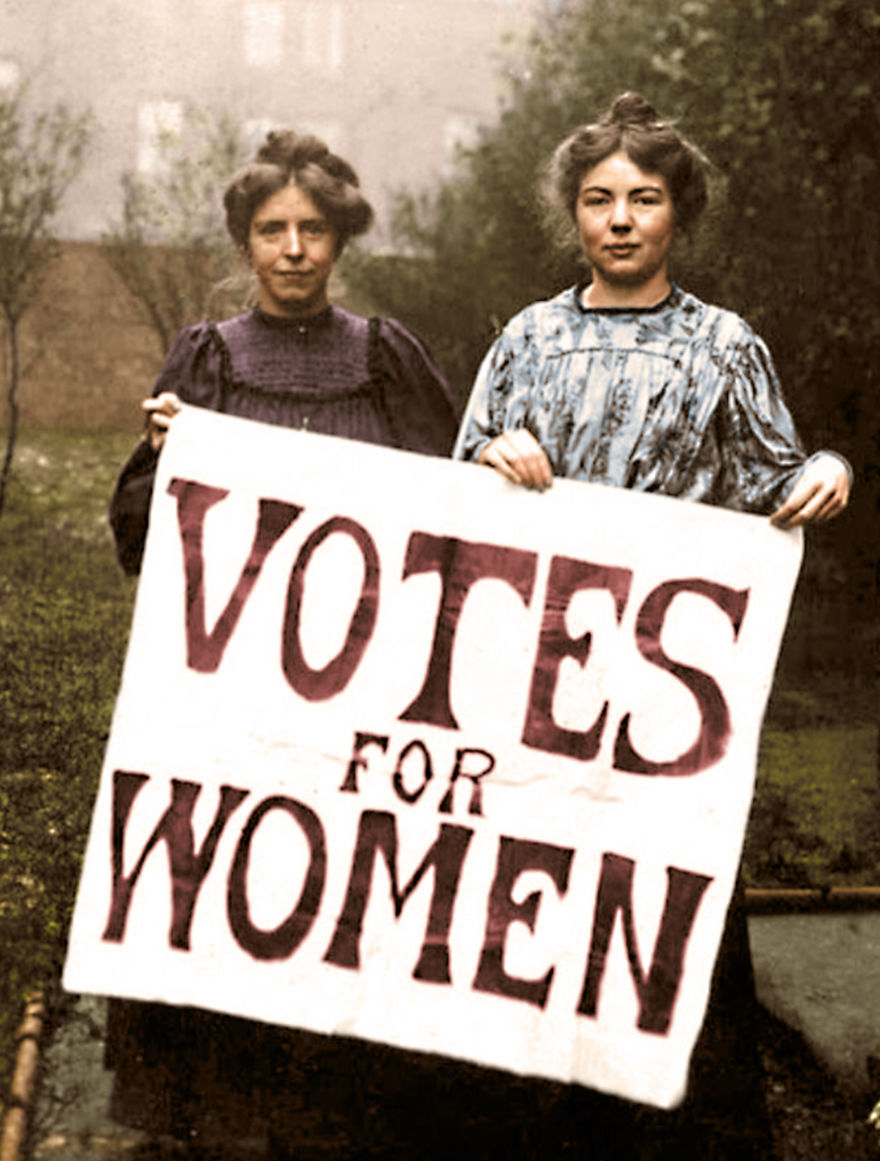
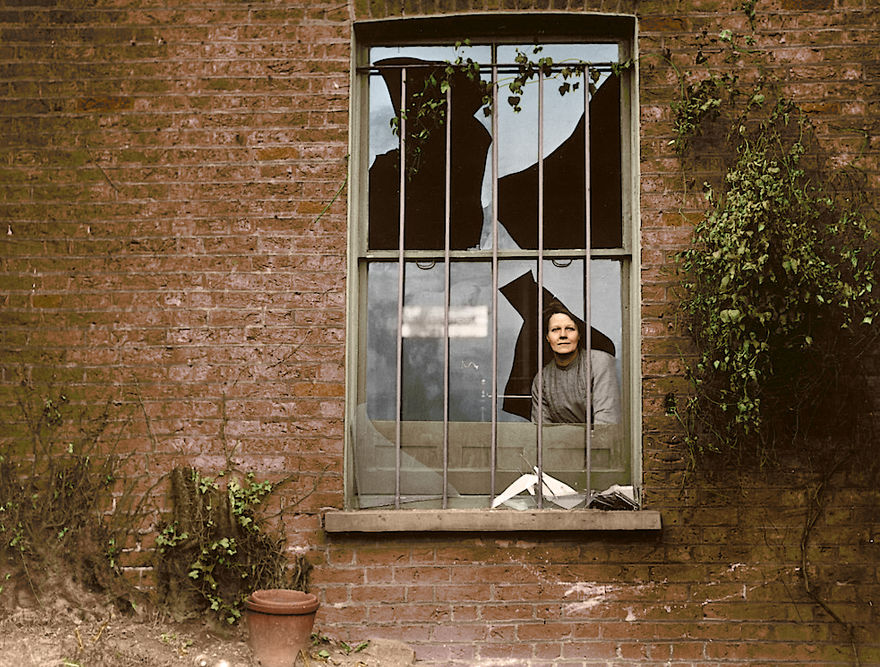
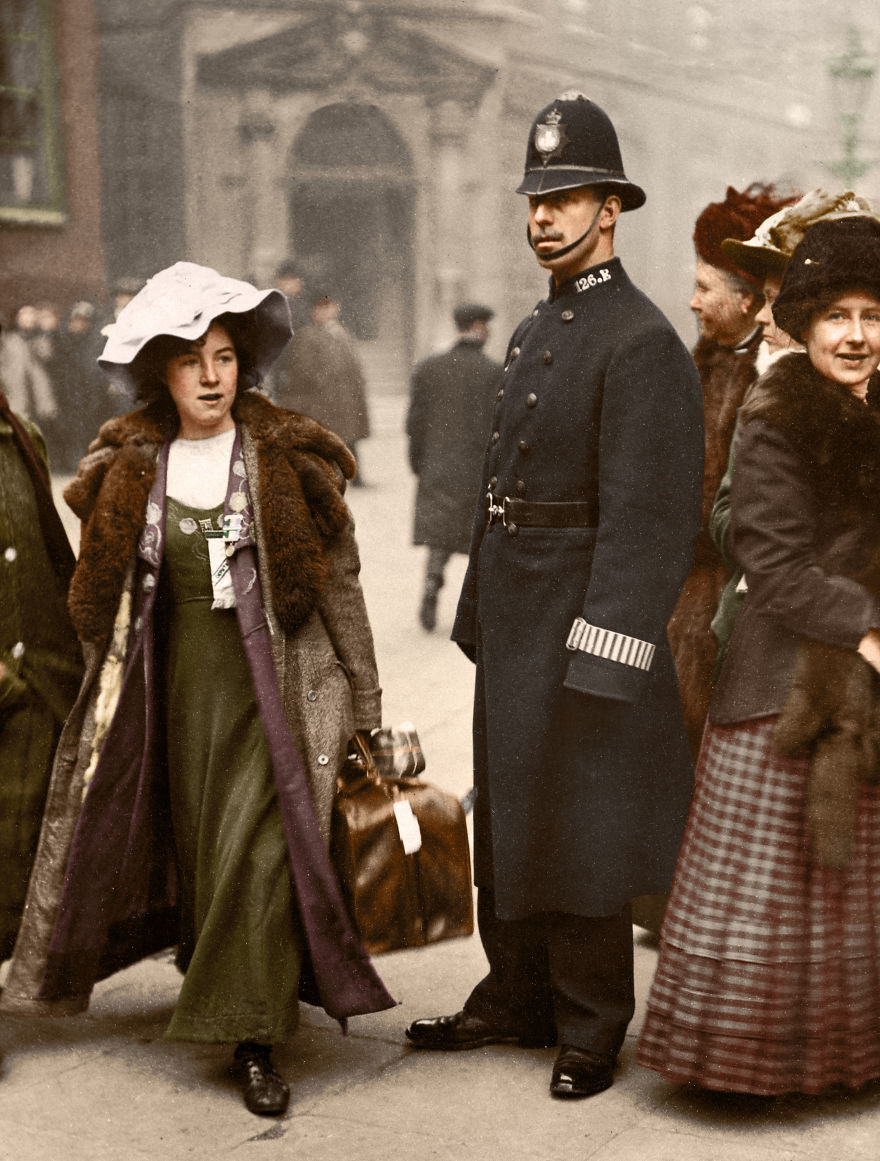
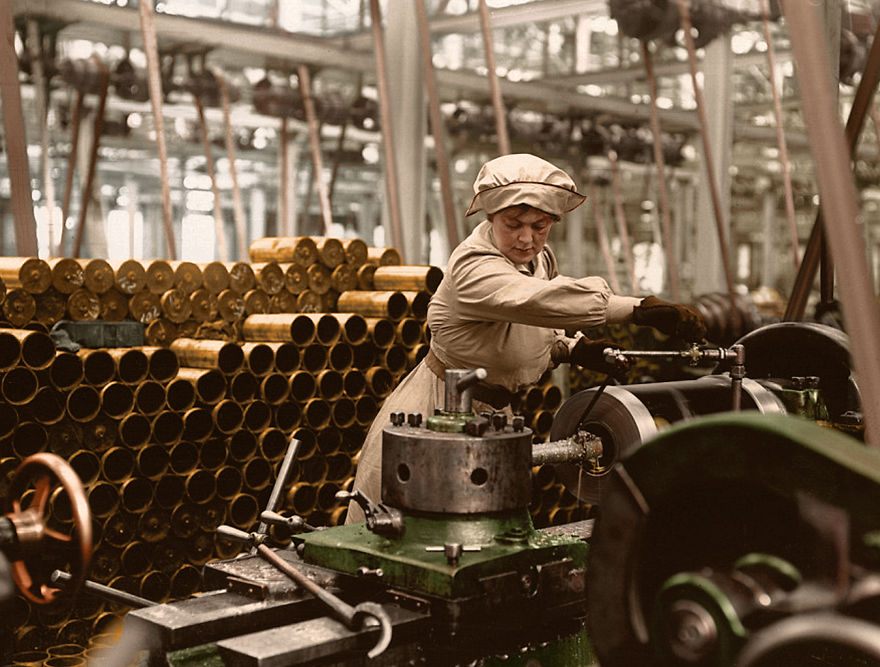



371
68